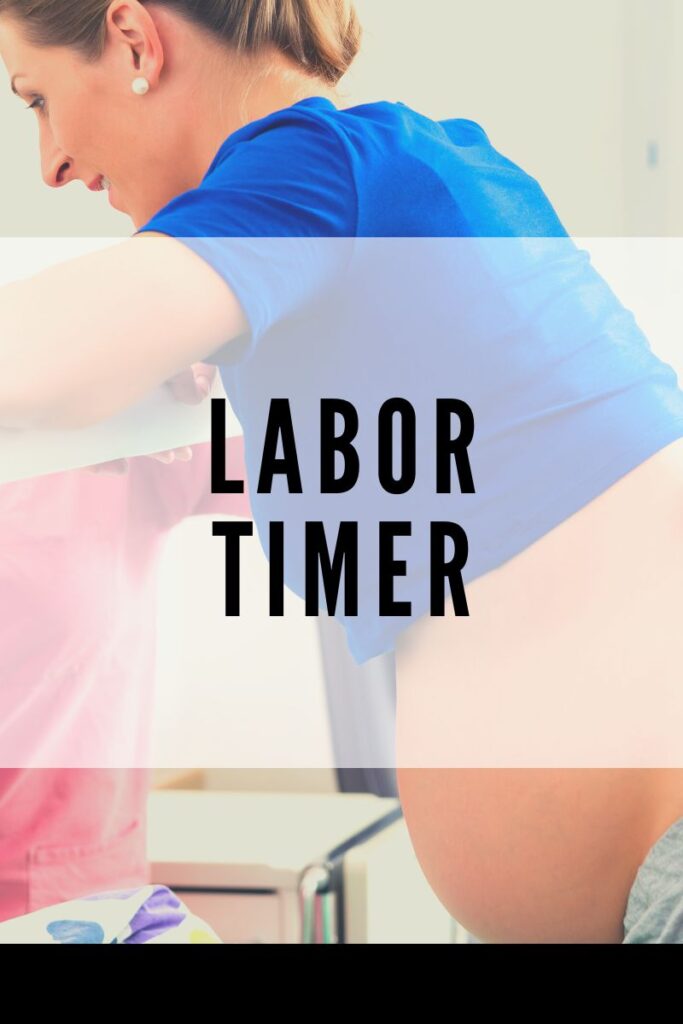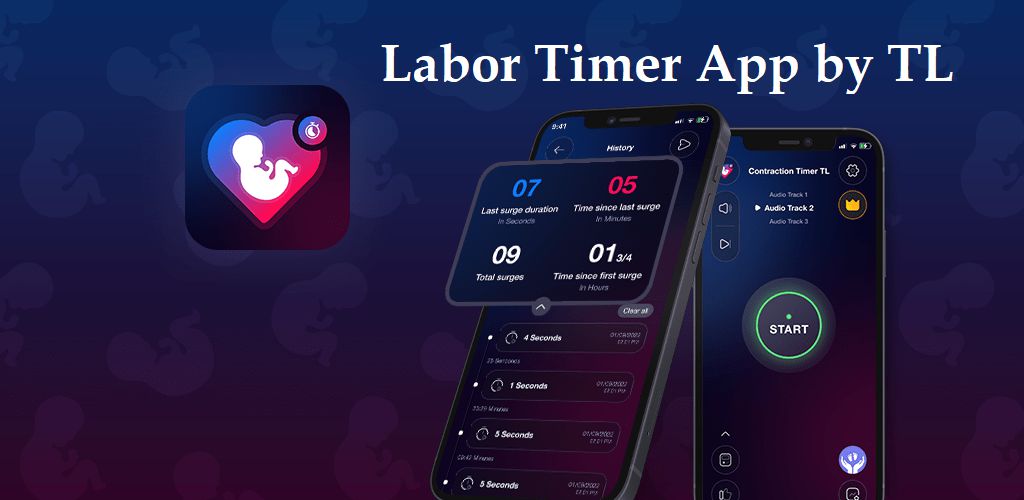There are many things to think about when you’re in labor – like how to cope with the pain, what position you should be in, and whether or not you want an epidural. But have you ever thought much about when you should time your contractions? If not, maybe you should!
Timing your contractions is an important part of labor, and there are a few benefits to using an app to help you do it. Keep reading for more information on the benefits of contraction timing during labor.
Table of Contents
What is a labor contraction timer, and what are the benefits of using it during labor?

A contraction timer is a device used to measure the length, frequency, and duration of uterine contractions. It can be used to help determine when labor begins, and it can also be used to monitor the progress of labor and the intensity of labor pain. In some cases, contraction timers may also help identify when preterm labor occurs.
The benefits of using a contraction timer during labor include more accurately monitoring labor’s progress, identifying when labor is beginning, and determining when preterm labor is occurring. This information can help decide when to seek medical attention and when to rest.
Additional benefits:
- Get a sense of how long each contraction lasts.
- Compare the intensity and frequency of your contractions.
- Share your labor progress with your doctor or midwife.
- Get immediate feedback on whether your labor is progressing normally or not.
- Feel more confident and empowered during labor by accessing information that can help you make decisions about your care.
Braxton Hicks contractions or true labor Contractions
Most women will sometimes experience Braxton Hicks contractions, or false labor, during their pregnancy. These periodic tightening of the uterine muscles are usually painless and irregular and do not indicate that delivery is about to begin. True labor contractions, on the other hand, are more intense and regular and often occur at regular intervals of time.
Unlike Braxton Hicks contractions, which can subside with rest or change position, true contractions will usually continue despite these measures. If you think you may be experiencing labor contractions, it is essential to contact your healthcare provider to discuss your symptoms.
How to time contractions with a contraction timer app

There are several different ways to time contractions, but using a contraction timer app is one of the most convenient and easy-to-use options. We have reviewed the Labor Contraction Timer by TL.
To get started, open the app and press the start button when you have your first contraction begins. The app will then automatically start counting the next contraction and continue to do so until you stop it. You can also use the app to keep track of previous contractions, which can help determine how long labor is likely to last.
Not only does the app have an easy-to-use interface, but it also helps many women achieve calm during contractions as they have implemented relaxation music and hypnobirthing audios.
This app uses artificial intelligence to determine when to head to the hospital accurately. By using the premium version, you can share the duration and frequency with your doctor.
Download the Contraction Timer for iOS or for Labor Timer for Android.
Overall, using a contraction timer app is a quick, easy, and effective way to ensure that you get accurate information about your contractions.
What are the signs that you are in active labor?
Childbirth is a normal and natural process that your body was designed to do. It is important to remember that every labor is different, so there is no one right way to experience it.
The most common sign that you are in active labor is when contractions become regular, more intense, and closer together.
Another sign is when the cervix has dilated to 6 centimeters. You may also feel a strong urge to push or have a sense of pressure in your rectum. Some women described the feeling as if their uterus was falling out.
Other signs indicate labor, but these are the most common. If you think you might be in labor, the best thing to do is to contact your healthcare provider. They will be able to help you determine if you are truly in labor or if it might be false labor.
Why is the process of timing contractions necessary?
The process of timing contractions is essential for a few reasons. For one, it can help you and your caregivers gauge how close you are to giving birth. It can also help you determine when it’s time to push during the second stage of labor.
Generally, the closer your contractions are together, the closer you are to giving birth. However, it’s also important to note that not all contractions are created equal. Some may be longer or stronger than others, and some may not be accompanied by any labor pains at all.
As such, paying attention to how each contraction feels and how often they occur is essential. You can better sense what’s happening in your body by timing your contractions and how close you are to meeting your baby.
What are some tips for managing pain during contractions?
During labor, contractions usually cause pain in the lower abdomen and back. The pain can vary from a tolerable tightening sensation to excruciating pain.
For some women, the pain is similar to menstrual cramps. Others describe it as a feeling of intense pressure. While there is no surefire way to eliminate labor pains, a few things can help manage the pain. First, mothers should try to relax as much as possible during contractions. Tense muscles will only aggravate the pain.
Second, breathing deeply and slowly can help to ease the discomfort. Finally, labor often progresses more quickly when mothers are upright and walking around. So, getting out of bed and moving around may help to speed up the process and reduce the overall amount of pain experienced.
When should you go to the hospital during labor?
It is often difficult to know when to go to the hospital during labor. For first-time mothers, it is usually recommended to go to the hospital when contractions feel solid and regular and the lower portion of the uterus is hard to touch. However, this is only a general guideline, as every labor is different.
If contractions become very intense or there is any sign that the baby may be in distress, it is always best to err on caution and go to the hospital immediately.
Likewise, if the baby starts to pass meconium (the first stool), this can be a sign of fetal distress, and you should go to the hospital immediately.
Generally, it is always best to trust your instincts and call your doctor or midwife if you are concerned about your labor.
Also check: AmyandRose Maternity Dresses
The Takeaways
If you’re pregnant and getting close to your due date, you may wonder if there are apps to help time contractions. While some women prefer to go natural, others find that having an app on their phones helps them keep track of the intensity and duration of their contractions.
And while it’s true that not all labor is the same, understanding how your contractions progress can help you know when it’s time to go to the hospital or birthing center.
So if you’re looking for a little extra support during one of the most critical moments of your life, consider downloading a labor contraction timer app today.













